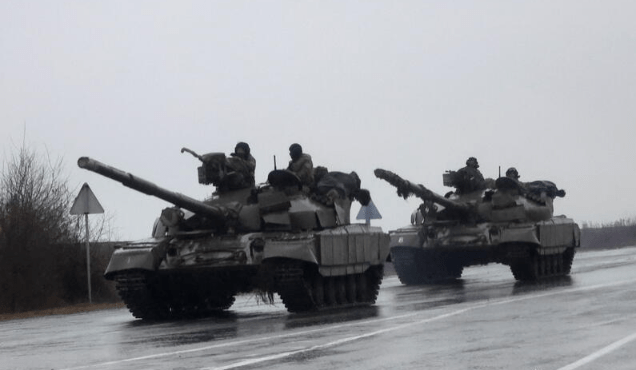Ukraine’s battlefield front line has now extended to nearly 1,250 kilometres, putting added pressure on an already strained defence network, according to Ukraine’s top military commander, Gen. Oleksandr Syrskyi.
In his latest briefing on the situation, Syrskyi revealed that the line of contact has expanded by about 200 kilometres over the last year.
With this, Ukrainian forces are now facing between 160 and 190 daily combat clashes with Russia’s much larger army.
“The enemy has shifted to a new tactic, one that we’re calling the ‘thousand cuts’,” Syrskyi stated.
New Russian Tactic: Small Assault Units
Since the summer, Moscow has altered its approach. Instead of launching massive offensives, Russian forces are now sending in small, mobile assault teams of four to six troops using the terrain to quietly infiltrate Ukrainian lines.
These units aim to disrupt supply lines and target rear positions, creating chaos without engaging in major battles.
While this method initially causes confusion, Syrskyi claims the small groups often become isolated and neutralised by Ukrainian counterattacks.
“They penetrate and strike. But in many cases, they end up trapped,” he said during a press briefing in Kyiv.
Russian Firepower Still Overwhelming
While adapting its battlefield tactics, Russia continues to dominate in artillery volume, reportedly firing twice as many shells as Ukrainian forces.
At the same time, the Kremlin has been saturating Ukrainian positions with drones, missiles, glide bombs, and artillery.
Yet, despite modest gains in rural zones, Russia has not succeeded in taking key fortified cities a vital aspect of Ukraine’s defence strategy.
“Ukraine could still win back all the territory it has lost to Russia,” said U.S. President Donald Trump earlier this week, referring to the 20% of land currently occupied by Russian forces.
Ukrainian Counteroffensive Makes Gains
Syrskyi confirmed that a recent Ukrainian offensive reclaimed 168 square kilometres of territory from Russian hands. Although modest in size, such advances offer a morale boost and demonstrate Ukraine’s resilience despite limited resources.
Meanwhile, Ukraine’s long-range precision strikes have been targeting key Russian military and industrial infrastructure. “In recent weeks, our strikes have heavily damaged vital enemy assets,” Syrskyi noted.
Drone Warfare: Ukraine’s Edge in Innovation
A key element of Ukraine’s evolving defence is its Unmanned Systems Forces, which are becoming increasingly sophisticated.
According to Syrskyi, 85 drone strikes were carried out inside Russian territory over two months, with targets including:
- 33 military sites
- 52 factories producing arms, engines, ammunition, drones, and rocket fuel
These attacks, he said, have contributed to a significant fuel shortage within Russia, disrupting logistics and slowing the Kremlin’s efforts to replenish its supply.
Winter Prep: Strengthening Ukraine’s Air Defence
With winter fast approaching and fears of renewed Russian attacks on energy infrastructure, Kyiv is ramping up air defences. The strategy now includes a mix of:
- Interceptor drones
- Helicopters
- Light aircraft
- Electronic warfare systems
Syrskyi reported that Ukrainian forces now intercept and destroy over 70% of incoming Russian drones. Furthermore, tests are underway on light, fixed-wing aircraft armed with machine guns, potentially a game-changer in counter-drone warfare.
While Russia continues to press forward with sheer numbers and evolving tactics, Ukraine is responding with resilience, innovation, and strategic precision. The battlefield remains fluid. But one thing is clear: this war is no longer just about territory, it’s a test of adaptability and endurance.






